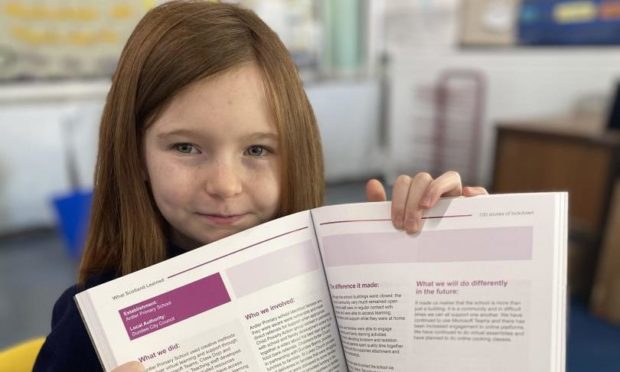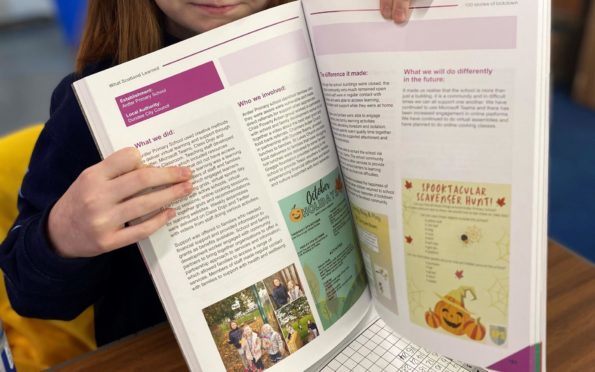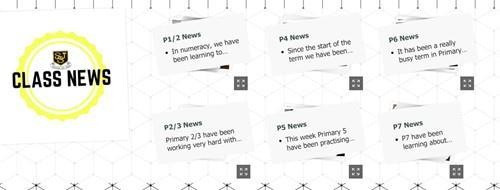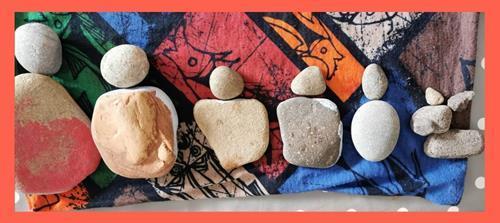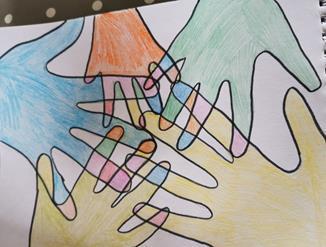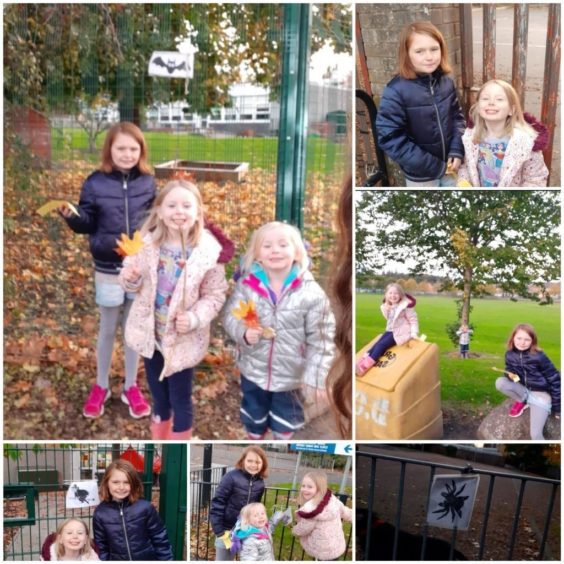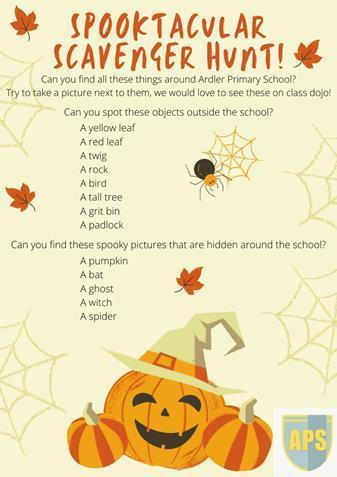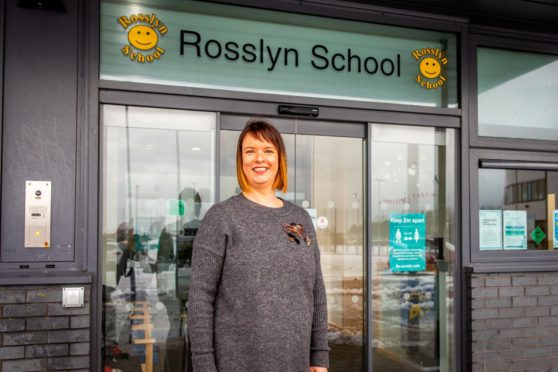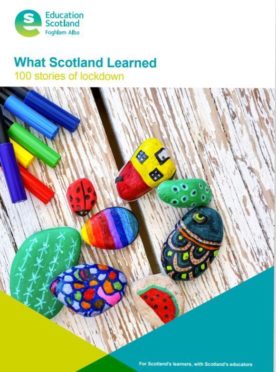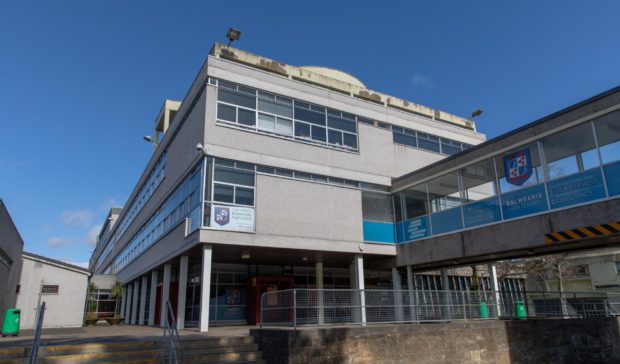Schools in Dundee and Fife have been celebrated for their ‘inspiring’ lockdown learning which helped pupils cope with the challenges of the pandemic.
Education Scotland has shared a collection 100 of lockdown stories from across the education system called ‘What Scotland Learned’.
It includes the adventures of local children who created their own newspaper for their community and completed scavenger hunts to stay active.
The book shows how schools, families and children adapted to the school closures in March and shares the creativity and resilience of school communities.
Tayside and Fife projects
St Joseph’s RC Primary School, Kelty — The St Joseph’s Times
St Joseph’s RC Primary School, Kelty — Home learning tasks
Ardler Primary School, Dundee — Scavenger hunts
Rosslyn School, Kirkcaldy — Multi-sensory YouTube classes
Claypotts Castle Primary School, Dundee — CALM boxes
Balwearie High School, Kirkcaldy — Cookalong lessons
Many teachers also reflect on the lessons they have learned following the difficult period of home learning, and how it has helped them improve their schools for the better.
Gayle Gorman, Education Scotland’s chief executive, said the stories were “nothing short of inspiring”.
100 stories of community, resilience and compassion through lockdown. ‘What Scotland Learned’ is filled with inspirational tales of how continuing education through lockdown has transformed learning https://t.co/SXc9YWInMW pic.twitter.com/aO35xRrfi6
— Education Scotland (@EducationScot) January 14, 2021
The St Joseph’s Times
Pupils in P6 and P7 at St Joseph’s RC Primary School, in Kelty, Fife, tried their hand at local journalism with the creation of their own weekly newsletter.
It was hoped the newsletter, called the ‘St Joseph’s Times’, would be an engaging project to motivate pupils during home learning.
The weekly newspaper featured a range of school and community news throughout lockdown.
The school told Education Scotland: “The children all took responsibility for a different area of the newspaper.
“They researched and presented the articles and features themselves. They contacted members of the local community for local news and interviewed people from as far away as China to find out the impact Covid-19 was having on their lives.”
The newspaper gave many of the pupils purpose during lockdown, and allowed them to cover real topics, which helped them cope with the pandemic.
“The children involved came to the project from very different stages – some were needing challenged and this type of personal research and independent study gave them that challenge.
The paper was real life for them and had lots of positive feedback so they wanted to make it better and better every issue.”
“Others were finding it difficult to engage with the normal classroom work and this hooked them in and kept them involved in learning.
“The paper was real life for them and had lots of positive feedback so they wanted to make it better and better every issue.
“The newspaper allowed the children to develop their literacy skills, independent learning, research, ICT skills because they had to use Teams, email and SWAY.”
The school is continuing the newsletter on a monthly basis after seeing the positive effect it has during lockdown.
Family learning
The Kelty school also recognised the stress felt by families with more than one child at the school.
To make their life easier, the school issued family learning packs each day to allow children at all stages of the school to work as a family.
Alongside their regular numeracy and literacy lessons, the children were able to collaborate on fun tasks such as arts and crafts with their parents and siblings.
The school added: “These tasks allowed children at all stages of the school to complete the same task as a family and greatly eased the stress that home learning was having on some of the parents and children.
“The activities focused on art and craft, baking, health and wellbeing, outdoor learning and a whole school assembly based on our school values.”
By adapting their remote learning to suit the school community, St Joseph’s helped make lockdown easier for pupils and parents, especially those who were also juggling working from home.
As pupils went back to the classroom in August, the school used the lessons it learned to positively change the school environment.
Homework is now issued online through Microsoft Teams or Seesaw and part of the assignments are family learning tasks which are whole school challenges that families can take part in together.
“There was a much stronger community spirit during lockdown and we are very keen to keep the momentum going,” the school added.
Scavenger hunts
Ardler Primary School, in Dundee, developed creative learning packs to help children learn virtually.
The packs included resources which supported families who did not have internet access. Specific activities which engaged learners included virtual sports days and cooking sessions.
For one of the tasks, pupils were encouraged to take their learning outdoors in a ‘spooktacular’ scavenger hunt around the school building, where they searched for items and shared their findings with their classmates on Class Dojo.
Although the school buildings were closed the school community very much remained open.”
The school said: “Although the school buildings were closed the school community very much remained open as school staff were in regular contact with families and were able to access learning, information and support while they were at home.
“Children and families were able to engage in learning and family learning activities from home, alleviating boredom and isolation. Children and parents spent quality time together as a family and this supported attachment and positive relationships.”
“Activities provided increased the happiness of the children and when children returned to school they were able to discuss memories of lockdown which were created by the school community,” the school added.
The school also supported families who were struggling financially during lockdown by providing information on grants and benefits available and supporting them with foodbank referrals.
Delighted to have received this @EducationScot book this morning with my @ArdlerPrimary contribution to #whatscotlandlearned
“Although the school buildings were closed the school community very much remained open” a reminder that we have done it once & we can do it again. pic.twitter.com/dj5TnQ8TSt— Jane Allen (@JaneArdlerSFDW) January 7, 2021
Multi-sensory YouTube classes
Rosslyn School, in Kirkcaldy, teamed up with three other schools for pupils with additional needs in Fife to support some of the most vulnerable young people in the community.
Headteachers from each of the four schools – which also included John Fergus in Glenrothes, Kilmaron in Cupar and Hyndhead in Buckhaven – collaborated to develop a private YouTube channel to share learning activities with families.
Through the channel, families within the school community were given access to a range of interactive and multi-sensory experiences which aided the children’s’ learning.
The quick thinking from staff to present their lessons virtually so quickly were a “life line”, according to families.
The school said: “Often lessons are heavily resourced with symbols, objects of reference and other sensory cues.
“Staff were so creative in finding ways of presenting the materials to families by displaying the symbol on the screen, introducing the resources they would need that could be found around the home, and keeping the language short using key works and signing.
“One of the PSA staff from Rosslyn presented a series of music videos that were familiar to our learners.
“Families reported that this was a life line at times. It helped their young people stay connected as they listened to familiar voices and songs.”
Home learning was a trigger for many learners at the school who associated the tasks only with being at the school.
Families reported that this was a life line at times. It helped their young people stay connected as they listened to familiar voices and songs.”
However it helped other youngsters stay connected with their communities as they watched staff tell stories and sing songs.
Families have watched a total of 187.7 hours of learning on the private channel and there were 4,200 views in just six months.
The videos were also frequently watched during the summer months which has inspired staff to offer support families through school breaks.
CALM boxes
Claypotts Castle Primary School helped 390 pupils in Dundee cope with stress whilst in lockdown.
The school put together a CALM box filled with worry dolls, playdough, breathing sticks and teddy bears.
The school built lessons around these items which allowed the children to focus on wellbeing as well as learning.
It said: “One key feature of the intervention over the summer was asking the children to place the teddy bear in the top floor window of their home so when the families were allowed to daily exercise around the streets in our community, they could count the teddies and reinforce the sense of belonging we wanted to promote whilst they were apart.”
Cookalong lessons
Many submissions were not included in the physical book, however Balwearie High School, in Fife, was featured on Education Scotland’s website for its innovative cooking classes which captured the attention of the local community.
Home economics teachers held weekly live cookalong lessons on the department’s Instagram page @Balweariefood.
Mrs Farmer, principal teacher of home economics, hosted 14 classes from her own kitchen and students from the secondary school and cluster primaries were able to pick up some practical skills.
The lessons attracted a large audience from across the local community, with more than 80 people viewing live and cooking along more than 700 new followers during lockdown.
Pupils were taught how to make a range of foods including muffins, soup, chilli, banana bread and the end of term strawberry tarts.
The school sent them the recipes and ingredient lists in advance.
P7 parents said their children felt they knew a teacher from the ‘big school’ and would help them to settle in better.”
“This helped our students stay connected during lockdown, they told us they liked seeing a familiar friendly face every week and tuned in especially to watch,” the school said.
“Some said it was the highlight of their week and wanted it to continue during the summer holidays!
“Some students said the cookalongs helped take their mind off things for a while, so helping their mental wellbeing.”
The cooking sessions also helped P7s from cluster schools transition into their new school during lockdown.
“P7 parents said their children felt they knew a teacher from the ‘big school’ and would help them to settle in better,” the school added.
